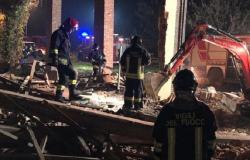At the beginning of May the first launch attempt with astronauts on board was canceled due to a defect in a valve on the launcher. With Starliner, Boeing will compete with Space X for trips to the International Space Station
The first attempt failed, the second was scheduled for today, June 1st, at 6.25pm Italian time. But not this time either Boeing she managed to bring his Starliner into orbita new means of transport designed for crews that must reach the International Space Station. A project for which the American company was financed by NASA ten years ago now, in 2014. And which she has already undergone severe delayswhile its main competitor – SpaceX – started his travels Crew Dragon already since 2020. Everything seemed ready in Cape Canaveral, Florida. The Atlas V rocket, the capsule with the two astronauts on board, headed to the International Space Station, was waiting for the countdown. But three minutes and 50 seconds after launch, the operation was suspended. The launch control audio appears to have stated that a launch control switch was not ready. While waiting for more details, June 1st will therefore not be the inauguration date of crewed trips on board Starliner. She has been identified another possible launch window, 24 hours later: June 2nd at 6.03pm Italian time. Two other possibilities, if more time is needed to identify the problem, are June 5th and 6th.
The first attempt (failed)
On May 6, a few minutes before departure, the first Starliner launch attempt was made canceled because of a defect in a valve which regulates the pressure of liquid oxygen on the Centaur second stage of the Atlas V rocket. There was talk of a new attempt within a few days but instead Boeing had to wait almost a month for the United Launch Alliance (USA) – the company that supplies the carrier – analyzed the problem. Which was judged to be a minor problem: The loss of helium caused by the defect has been judged not risky for the mission. «Sometimes in space flights you plan for the unexpected and design the vehicle in order to have a margin – he declared Steve Stickhead of NASA’s commercial transport program at Space.com – In our case, we have a margin in the helium tank and we can handle a leak a hundred times worse than this». The rocket was therefore redeployed to Cape Canaveral on May 30. But, once again, he didn’t leave.
How Starliner is made
Starliner – the full name is CST-100 Starliner which stands for Crew Space Transportation-100) is a tall space capsule five meters circular in shape and with a diameter of 4 and a half metres. It is accessed through a door and inside there is space for 7 people (but NASA missions require a crew of 4 or 5 people). A large window allows you to watch the view during the journey. The interior is anyway flexible and can be adapted both to transport passengers and to transport goods. The capsule was designed to be reused up to ten times, while the service module is not reusable. It is capable of remaining attached to the International Space Station for a period of seven months and it’s compatible with different launch vehicles. Boeing will make two Starliners available to NASA, which will thus be able to alternate on the various missions: at least six months must pass from one launch to the next for the capsule to be ready to leave again. They are inside control tablet, a wireless network and a light system called Sky Lightning which aims to create a relaxing environment during the flight. Starliner’s journey to orbital insertion takes approx half an hour (the running time is however indicative). To reach the International Space Station it takes between 6 and 12 hours. Once the mission is completed, she will return to Earth on a journey of about 45 minutes.
Starliner was built within the NASA “Commercial Crew” program which aims to create a transport system to and from the International Space Station through partnerships with private individuals. This translates into travel for research, cargo transportation and space operations. But this type of spacecraft can also be used to transport civilians into orbit, as Space X is already doing together with Axiom Space. And as Boeing also intends to do: «We sell the fifth extra seat for NASA missions – they write on the site – Potential customers include commercial and government-sponsored astronauts and also private citizens who fly as tourists. The Starliner is also slated to transport crew to Blue Origin’s upcoming Orbital Reef commercial space station.”
Astronauts on board
Two astronauts, two space veterans, were chosen for this inaugural flight. The commander Barry E. Wilmore he has already spent 178 days in space and this will be his third trip. There will be with him Sunita L. Williams, the pilot, who completed two missions spending 322 days in space. The two veterans were selected for Starliner’s first voyage in 2020. So they have been waiting for this launch for four years. The two astronauts, in addition to Starliner, also have to test some new spacesuits created by Boeing, which are 40 percent lighter than those of the previous generation, and are equipped with touch gloves to be able to handle tablets on board.
Delays and Space X’s lead
With this capsule Boeing aspires to become the second certified private company for missions to and from the ISS, together with SpaceX A race that they started together but which Elon Musk’s company clearly won. In 2014, NASA decided to rely on private companies to transport crews to the International Space Station. He chose two companies, Space X and Boeingto be entrusted with the task of building spacecraft that could replace its old shuttles. The two contracts were similar, but with very different remunerations. Space X received funding of 2.6 billion dollars, the investment in Boeing was equal to 4.2 billion dollars. Objective: be ready in 2017. Confidence in Elon Musk’s new startup was evidently lower, but it managed to launch its spacecraft Crew Dragon, with crew on board, in 2020. Boeing, on the other hand, struggled quite a bit to build its Starliner, also having to adapt to the innovations brought by Space In particular those related to accidents of its aircraft model 737 Max 9, whose panels proved faulty after one fell off during an Alaska Airlines flight. But above all those linked to airplanes – still 737 Max but version 8 – fall in Indonesia in 2021 and 2018 and in Ethiopia in 2019.
The first test launch – uncrewed – of Starliner was scheduled for 2015 but it was delayed to 2019. There were gods malfunctions, with overloading of the thrusters leading to such fuel consumption that it ran out before arriving at the International Space Station. In 2021 they try again, but the test is postponed for a year again due to problems with the propulsion system. In 2023 the journey is finally completed, but doubts about the functioning of the entire system remained. While Boeing tries – without success so far – to inaugurate its “space taxi”, Space X has already completed seven missions with NASA and an eighth is currently underway.
June 1, 2024 (changed June 1, 2024 | 6:51 pm)
© ALL RIGHTS RESERVED






